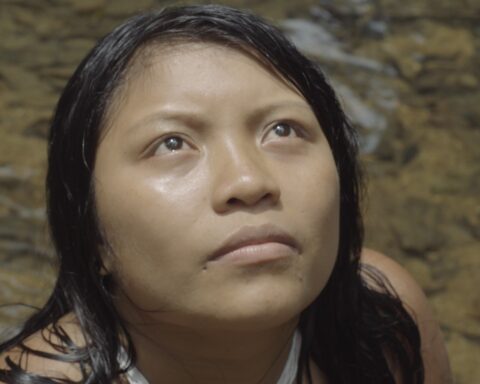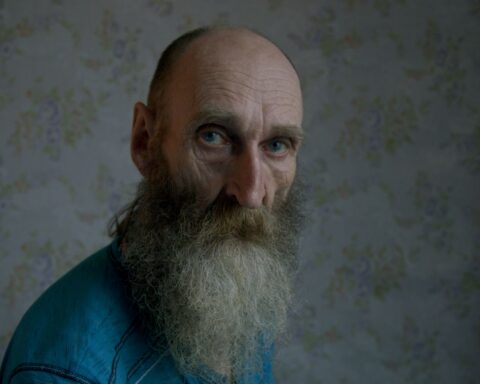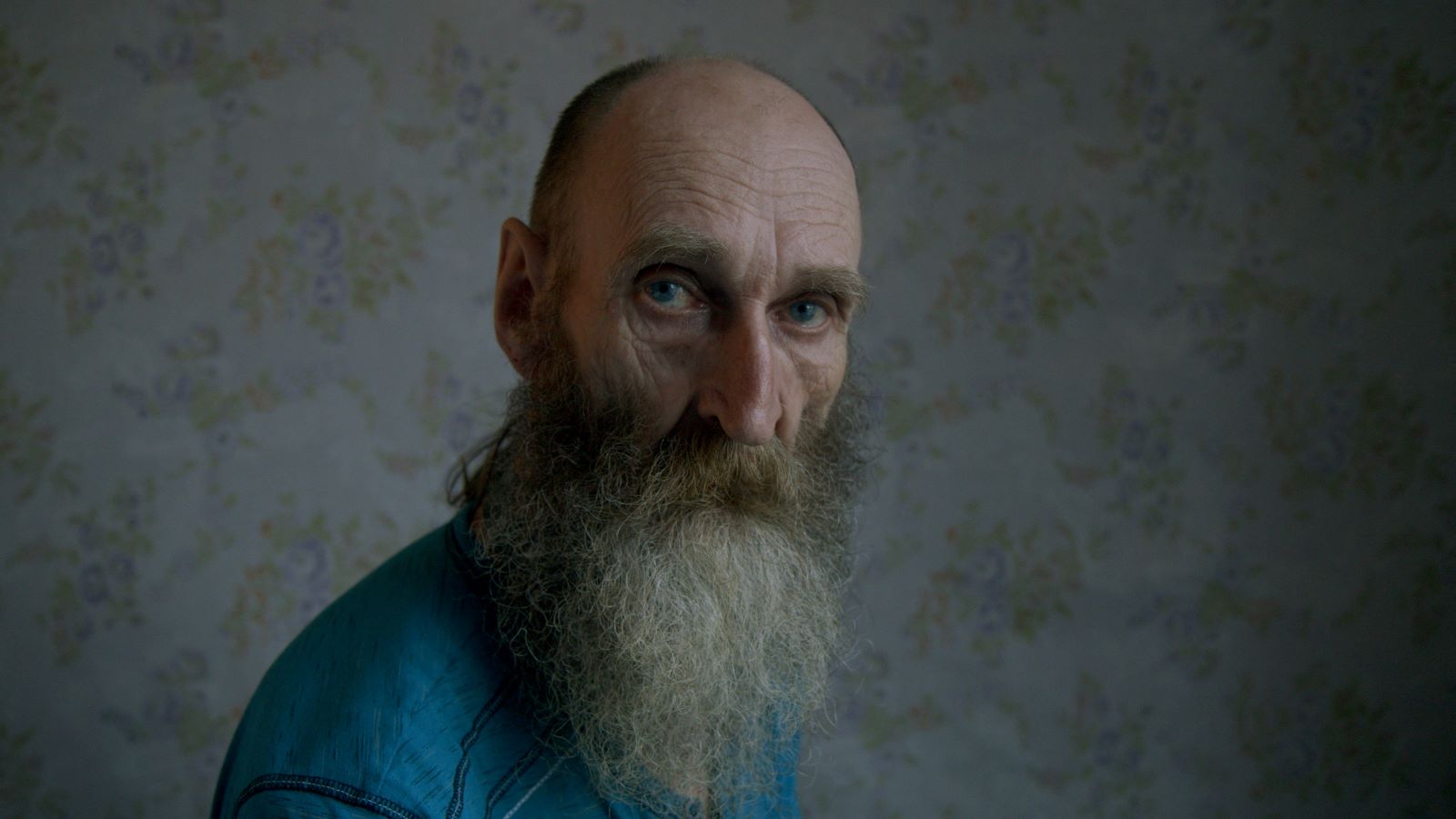“Microplastics are possibly the most serious type of pollutant our society has ever created.”

That’s quite an opening statement from Rick Smith, executive producer of Plastic People, a new documentary produced by Toronto’s White Pine Pictures (Once Were Brothers: Robbie Robertson and the Band, Unloved: Huronia’s Forgotten Children) that explores how every human on earth became polluted with tiny particles of plastic and what this means for our lives.
For the unfamiliar, microplastics are tiny fragments that have shredded off bags, fabrics, tires—any plastic product you can name—and now blanket the earth: We have found them at the bottoms of the deepest oceans and the tops of the tallest mountains, from the Mariana Trench to Mount Everest.
“It’s hard to wrap your head around the fact that every molecule of plastic ever created still exists somewhere on Earth in some stage of degradation, because this stuff never disappears. It just goes from being larger pieces of litter to tinier and tinier particles,” says Smith.
As the host of Discovery’s Daily Planet, journalist and Plastic People co-director Ziya Tong has followed the emerging science around microplastic pollution for two decades, ever since disturbing images of marine turtles and birds choking on plastic trash went viral.
“It was the growing ubiquity of microplastics that really made me start to worry,” says Tong, speaking from Toronto.
Now scientists find microplastics in every organ they look at: the liver, lungs, intestine—even the brain and placenta.

“In the beginning, we found it in one organ, then when we found it in the bloodstream, it was very scary because that implied it was spreading all over the body,” she says. “Seeing those breaches one by one, it’s been a slow and rather devastating domino effect.”
Tong and co-director Ben Addelman set out to tell what she has admitted is “possibly the most consequential story she has ever told,” to trace the complete story of microplastic pollution, from the adoption of plastics at the end of the 19th century, to the “plasticization” of life in the post-war era to modern studies of their impact on our health.
Study after study has found plastic particles everywhere we look: tap water, snowflakes, air samples, and unsurprisingly, human tissue. We are all becoming “plastic people,” or as Sedat Gündoğdu, a Turkish scientist from the Microplastic Research Group, jokes in the film, “Homo plasticus.”
“This is the starting point of the entry of plastic into the food chain,” says Gündoğdu, brandishing an aged clump of soil blended with shreds from plastic agricultural sheets, which he terms “plastisoil.” We can optimistically remove Saran Wrap and Tupperware from our homes and avoid food in plastic packaging, but when plastic is embedded in agriculture and food from the start, it doesn’t do much good.

“There is no way to clean microplastics from the environment,” says Gündoğdu. “We are poisoning ourselves with our own hand.” And that is just one source of plastic pollution. Step back and the film shows that the bigger picture is overwhelming.
“It is hard to wrap your brain around how astronomically huge the numbers are: over 1.5 billion plastic bottles are bought every single day. 2 million plastic bags are used every single minute on earth,” elaborates Smith in the film. Half of the 400 million tonnes of plastic produced annually, which could be used for useful things like semiconductors, syringes, and smartphones, go into disposable single-use products, which, once discarded can release tiny particles that can enter the global planetary cycles and wind up in our bodies.
So far, so worrisome. But most of us can name half a dozen pollutants that headlines have also screamed at us to worry about: asbestos, diesel, lead, fluoride. These are everyday polymers, the same materials found in our phones, bottles, carpets, computers, pens, and hundreds of other objects we touch with our hands every single day. Could these seemingly inert materials be so much more of a cause for concern compared to nuclear fallout or heavy metals?

The answer for Smith, Tong, Addelman, and many scientists is a resounding yes. So, what can be done about it?
For the producers and co-directors, the response was to make an urgent film about how we are all becoming Plastic People, and why we should care.
“Our ambition was to produce something comprehensive,” says Tong. And if one word can describe this film, it is that: comprehensive.
Most environmental documentaries narrow down to one issue, whether it’s the fight to protect the Amazon (The Territory, 2022), coral reef declines (Chasing Coral, 2017), or overfishing (Seaspiracy, 2021).
Plastic People ambitiously, and successfully, covers every facet of this staggeringly broad issue. Historic, economic, environmental, psychological, scientific, and, of course, medical, topics are all covered. The film takes us to Minnesota, Turkey, Italy, Amsterdam, Texas, England, the Philippines, Paris, and Canada, visiting labs, operating theatres, slums, and beaches. It veers from the micro—tiny plastic particles and their toxic contents—to the macro: capitalism, corporate lies, colonialism, and climate change.
Tong, Addelman, and Smith explore the roots of plastic adoption in the industrial age when cities were electrified with plastic-insulated wires, and the Second World War when these “wonder materials” began to be mass-produced. We learn that the global adoption of “single-use” plastics was not an accident: following the war and seeking new markets, the petrochemical industry actively engineered this, pushing their message through the media, such as with an influential piece in 1955 Life Magazine titled “Throwaway Living,” promoting plastic dishware as liberating us from the drudgery of cleaning.
“They had to train us to throw useful products away,” says Addelman. “That to me is the biggest issue: We have made things single-use when they will last forever.”
Though we diligently recycle, most of our plastic garbage winds up in developing countries for disposal (termed “waste colonialism”) or littering far-flung beaches. “If plastic couldn’t be exported and you had to deal with it where it was used, I guarantee this problem would go away,” says Addelman.
And if that wasn’t dire enough, fossil fuel companies now want to triple global plastic output to financially compensate for the decline in burning oil for energy. “Production just keeps growing. Plastic is the embodiment of capitalism,” summarises Susan Freinkel, author of Plastic: A Toxic Love Story (2011).
Moving from the macro to the micro, we explore the latest research on one endpoint for this pollution: our bodies. Tong not only scours the latest research, but has her blood and urine samples analysed. Holding a vial of her own faeces, she jokes, “This is the shit I do for science.”
She visits environmental scientists such as Mary Kosuth from the University of Minnesota, who has found microplastics in air samples, drinking water, and snowflakes. In the Netherlands, Dr. Gavin ten Tusscher explains how microplastics carrying “endocrine disruptors” (chemicals that mimic hormones, such as phthalates and BPA) could be responsible for the “major increase” in breast, prostate, thyroid, and testicular cancers. In Turkey, neurosurgeon Dr. Emrah Çeltikçi, after removing a tumour from a patient’s frontal lobe, worries about microplastics in the brain.
And in Rome, obstetrician Dr. Antonio Ragusa describes finding plastic particles in placenta. “That plastic was actually inside the cells, where it could alter the way DNA is expressed,” he warns.
Does this mean microplastics can can spawn cancers? Even in the womb?
“As a science journalist, I’m not willing to make connections until I see them. I don’t like exaggerating,” says Tong.

For my part, as another science journalist, I wrote about the possibility that microplastics pose a serious threat to human health 16 years ago in a 2008 cover story for This Magazine, “Plastic Unfantastic,” which traced the fate of plastic particles from factories to ocean gyres to the food chain.
There were no studies at the time that had analysed human tissue, so I focused on the research of marine ecologist Richard Thompson from the UK, who had found that microplastic particles from the ocean frequently held concentrations of PCBs a million times greater than those from the surrounding water. Subsequent experiments with lugworms found the invertebrates would absorb the toxic chemical phrenathrene from microplastics soaked in the molecule and placed in their tank.
I am a little embarrassed to read what I wrote 16 years ago: “It is still uncertain whether microplastic pollution represents an environmental hazard.” Granted, there were no studies to prove my theories—that microplastics would be found everywhere, including the human body, and that their toxic cargo was likely causing innumerable health impacts, including cancer—but I wish I had been more vocal, because everything I predicted turned out to be true.
Now the latest science gives us even more reasons for concern: this March, a study in the New England Journal of Medicine made a direct link between microplastics and cardiovascular disease. It found that in patients who underwent surgery for carotid artery disease, those who already had detectable levels of microplastics in their blood vessels subsequently also had higher rates of myocardial infarction, stroke, and death for three years afterwards.
And some of our best-intentioned ideas just make the situation worse. In the European Union, directives for a “circular waste economy” have resulted in 40% of the 8 to 10 million tonnes of sewage sludge produced annually is spread on farmland. Combine that with microplastic-bound fertilisers and “biosolid” natural fertilisers mixed with “microspheres,” European farmland is now the largest global reservoir of microplastics.
Quite the situation we’ve put ourselves in.

Is Smith being hyperbolic in claiming microplastics are “the most serious type of pollutant ever created”? I didn’t think so in 2008 when I first wrote about them, I didn’t think so when Smith wrote Slow Death by Rubber Duck in 2009, and I don’t think so now.
So, can this film make a difference?
All environmental documentaries have the same ambitions: to not only raise awareness but push us to act.
The granddaddy “green doc” of them all, Al Gore and Davis Guggenheim’s An Inconvenient Truth (2006), catapulted climate change into our global consciousness by explaining the nuts and bolts of a supposedly contentious issue, shifting global warming from “a matter of scientific debate”—which it never was—to an unquestionable fact that should terrify everyone, and move us to action.

Plastic People, the latest in a growing list of fantastic environmental docs, should make us aware of an issue that affects us all and leave audiences wondering how we were ever so stupid in the first place. And like An Inconvenient Truth and other fine environmental films, it should make us want to work for change.
Strategically, the producers have aligned the release with the dates of key international negotiations, most notably the UN’s Intergovernmental Negotiating Committee (INC-4), to be held in Ottawa in April 2024. The plastic equivalent of the IPCC, this will strive to set out an internationally legally binding treaty on plastic pollution and lead to a treaty by 2025. “That is our chance as a global community to seriously reduce plastics in the world,” says Tong.
For decades, it has been borderline obligatory for all environmental docs to contain a “message of hope” in the conclusion. Few filmmakers wish to do more harm than good by rendering us hopeless and inactive. Most docs conclude with “calls to action,” which frequently have been infuriatingly chirpy. I can think of dozens of films about climate change that ended with “Come on America, we can do this!” Typically, the focus has been on individual choices—buy an electric car, fly less than three times a year—which kind of falls flat when you look at the bigger picture.
Refreshingly, Plastic People does not deliver simple-minded advice about clearing plastic products from our homes, as we’d still ingest microplastics through drinking water, air and food. And it would probably be impossible (ever seen a glass bottle of shampoo?). Nor do they scold us to recycle our plastic waste, or tell us, for the millionth time, to bring our own shopping bags.

Instead, they focus on more radical actions individuals can take. Take for example Texan Diane Wilson, who sued the petrochemical giant Formosa Plastics for illegal dumping of industrial waste into the local estuary, destroying fisheries that had supported her family for generations. With evidence from 2,500 water samples, in 2019, she won $50 million, one of the largest settlements in the history of the American Clean Water Act, and is now investing “every penny” into her community.
And small communities can make huge steps, for example Bayfield, a town of just 1,100 people on the shore of Lake Huron in Canada that became the first “plastic-free” community in North America. More than 1,000 other villages and hamlets have followed suit.
Even in developing countries with shocking conditions, things can be turned round, such as with the Pasig River in the Philippines, once so chocked with trash it seemed you could walk across it. Now it is so clean that it is virtually unrecognisable.
“What you can do in just a few years is tremendous,” says Tong. “So, I am hopeful.”

The cynic in me remembers that no matter how much fanfare is made over IPCC treaties, global greenhouse gas emissions just keep rising. And that’s just carbon dioxide—a naturally occurring gas that is non-toxic and will be absorbed by vegetation over millennia. Other pollutants are more persistent and more dangerous. A century of leaded gasoline use left the globe covered in lead, and we will never get rid of it. Same goes for the mercury released by coal, persistent organic pollutants such as PCBs and other manmade poisons.
As much as I would love to think we can “turn things around” with plastics, I cannot help but think it’s too late.
Smith gets both the opening statement about “the most serious type of pollutant,” and the last word: “We know that our society can solve pollution problems. Our grandparents were exposed to pollutants that don’t exist anymore because the health effects became clear, those chemicals were banned, and the population became healthier as a result. This is not rocket science.”
Tong reminds us that we have only had single use plastics as the norm for a century, so we can return to the old ways quickly.
“The plastics industry trained us to live in ‘disposable culture land,’ so we can use those same tactics to train people to return to ‘grandma land,’ when people knew how to fix and reuse things,” she argues. “Single-use plastics were sold to us with the idea that life would be easier. So, we just need to show people that without them, we can live in a world that isn’t filled with garbage, and that will be healthier, saner, and more beautiful. That idea is our gift.”
I share the view that eliminating single-use plastic is a no-brainer, and as hopeless as the situation seems, we can’t not try. But I find it be optimistic given humanity’s track record.
Which is why I would have given Dr. Ragusa the last word instead:
“We must change the way we see the world, and we must revolt. And that is the main goal of our research: to inspire rebellion.”













